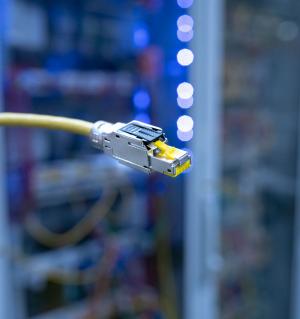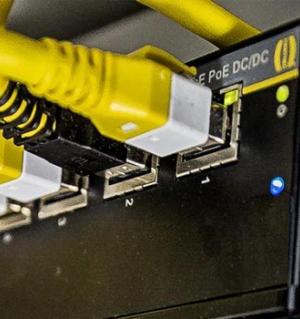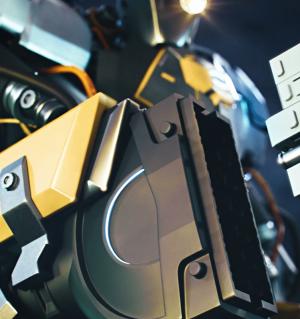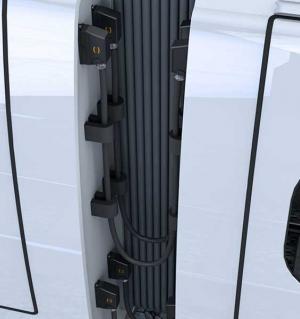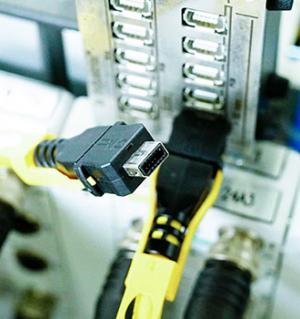Products & Solutions
Connectors Outperform Hardwiring/Lugging
Connectorization vs Hardwiring
When connecting an application, there are two methods: hardwiring/lugging and connectorization.
Hardwiring/lugging is defined by its permanence. The individual wires within a cable are individually connected directly to a terminal block or PCB. The intention is that the cable will never be disconnected from the application. This is because of the difficulty of uninstalling individual wires and then reinstalling them correctly.
Connectorization adds a quick way to connect and disconnect between the two points. Connectorization is so common in the consumer electronics space that it is almost invisible.
Let's compare these two methods through applications used in everyday life: light switch panels (hardwiring) and coffee makers (connectorization).
A light switch panel is hardwired into your house, i.e. wires are connected directly to the back of the panel. If you've never changed a light switch panel out in your home, you can search online for a 16-step wikiHow tutorial. This tutorial includes steps such as "label the wires so you do not mix them up." You need a screwdriver and wire cutters. Due to the complexity and time required, many homeowners opt to schedule an expensive electrician to come to their house rather than deal directly with rewiring their light switch.
Now let's compare plugging in a coffeemaker. The plug on the end of the cable plugs into a wall out. One second and it's ready to go. It's so easy and intuitive that there is no need for a wikiHow tutorial. This is because connectorizing is so easy and intuitive, and therefore invisible.
The same concepts discussed above can be applied to industrial applications.
Why Some Manufacturers Choose Hardwiring
Hardwiring/lugging is inconvenient. It is inconvenient for anyone who needs to install, troubleshoot, test, or maintain an application. However, for the manufacturer who designs the application or installs it once, hardwiring/lugging is a bit less expensive. The ability to connect/disconnect via a connector adds an initial labor step and a bit of material. Manufacturers who are looking to shave as much as possible off the cost to produce a product may choose to hardwire/lug.
The problem is that for anyone who uses that product, or even for the manufacturer when they install it on-site, the consequences of hardwiring have an additional, real and volatile cost. And the one who pays that price tends to be the end user. First, the manufacturer has an electrician disconnect each wire, and then when it arrives at the end user, another electrician must come in to painstakingly connect each wire again. It is also so easy to miswire, which results in expensive troubleshooting costs.
Remember the light switch example above? In the tutorial, it states the importance of labeling the wires. In the case of a light switch, there are only three wires. Now imagine a machine with tens or hundreds of wires. If anything is miswired, troubleshooting must occur, and the end user eats the cost.
Hardwiring is frustrating. It is outdated.
Today Connectors Are King
In the past years there has been a monumental shift away from hardwiring toward connectorization. As machines and devices become more complex and as our world demands better efficiency and less downtime, there is no room left for the inconvenience of hardwiring.
Connectorization is time and cost-efficient during all aspects of an application's life cycle from installation to maintenance and even relocation. Each of these activities is a time where a hardwired solution would be impractical, require a skilled electrician, and open up a company to unplanned, unpredictable troubleshooting costs. Connectorization, in contrast, does not require on-site skilled labor and eliminates unplanned troubleshooting.
Hardwired components have to be assembled on-site, which requires specialist electrical contractors and a lengthy testing process to ensure the wiring has been connected correctly. Plug & Play connectors can be easily linked to each other and machinery, resulting in a simple, flexible and versatile installation experience.
Industrial Connector Case Studies
Paper Conveyors
Problem: A manufacturer of paper conveyors for commercial printing presses had been hardwiring over 200 wires to the control box of each unit prior to final testing. This process could take up to four work days per unit.
Solution: Switching to six modular connector assemblies in a plug-and-play solution reduced that by as much as 2½ days. The connectors cost $1,400 per unit, but the savings of $3,500 in labor and time enabled them to increase their production rate and reduce overhead.
Automated Precision-Welding Machines
Problem: A builder of large, automated, precision-welding machines was hardwiring over 300 contacts per unit. It took a week to build and test one, then several days to dismantle it and another week to re-assemble it at the customer's location.
Solution: Switching to pluggable connectors cut wiring time dramatically, saving extensively on labor cost. Now, each step that used to take a full week is performed in less than a day.
Conveyor Systems
Problem: A producer of conveyor systems needed a solution that was suitable for the food and beverage sector. They needed a solution where installation of the conveyor was quick and downtime was minimized. At the same time, the solution needed to be an IP69K-compliant product that could withstand harsh conditions like high-pressure steam cleaning during wash-downs.
Solution: Adopting a connector-based assembly in place of hardwiring allowed them to reduce install time and maintenance downtime and increase the throughput of the conveyor by 15%, with cost savings going directly to their bottom line. The connector was IP69K rated making it compliant for food and beverage applications.
Acoustic Microscopes
Problem: The maker of acoustic microscopes for analyzing the integrity of semi-conductors was planning a new model requiring 120 leads of varying voltages. The goal was a machine with a small footprint, but engineers ran out of interior space for such an elaborate power distribution.
Solution: By switching to two heavy-duty connectors with 60 pins each, they were able to streamline interior wiring, achieving the desired footprint, capturing cost savings, eliminating internal wiring bundles and requiring less metal paneling.



